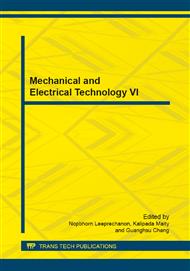p.33
p.38
p.44
p.49
p.54
p.58
p.63
p.68
p.73
Parametric Optimization in Turning of CFRP (Epoxy) Composites: A Case Experimental Research with Exploration of HS Algorithm
Abstract:
Carbon Fiber Reinforced Polymer (CFRP) composite materials find varied engineering applications especially in automotive, aircraft and locomotive industries. Hence, it has become essential to study machining and machinability aspects of these composites. This paper reports an application of harmony research (HS) algorithm through a case experimental research in order to obtain optimal parametric combination in turning of CFRP (epoxy) composites. Taguchi’s L9 orthogonal array has been used for experimentation. The performance indices such as surface roughness and cutting force have been chosen; and corresponding machining parameters that have been studied like spindle speed, feed rate and depth of cut. Optimal results have also been compared with genetic algorithm (GA); it has been revealed that harmony search method provided better result as compared to genetic algorithm.
Info:
Periodical:
Pages:
54-57
Citation:
Online since:
August 2014
Authors:
Keywords:
Price:
Сopyright:
© 2014 Trans Tech Publications Ltd. All Rights Reserved
Share:
Citation:


